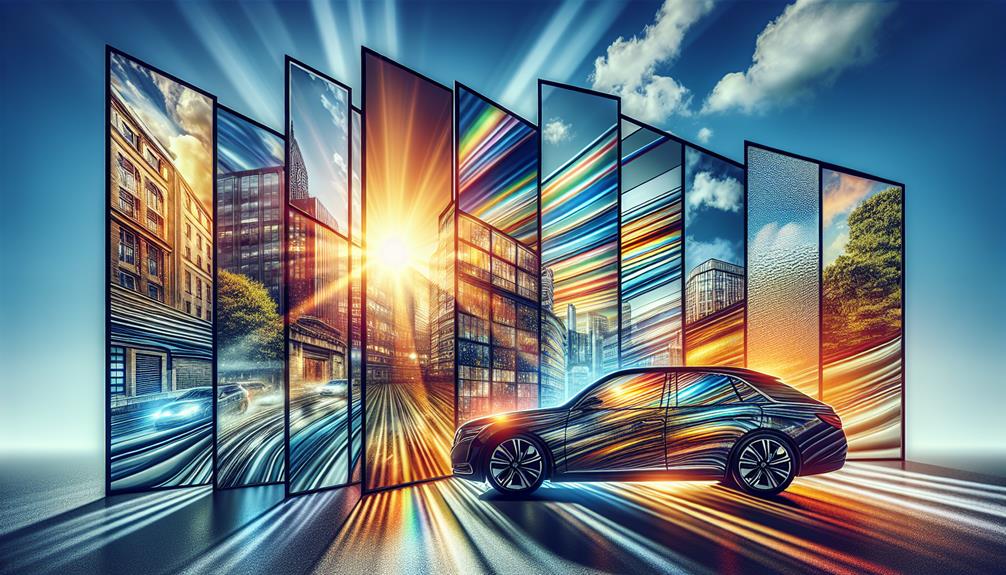A Comprehensive Guide to Dyed Window Tint: Benefits, Drawbacks, and Applications

In the realm of window tinting, dyed window tint stands out for its dual capacity to enhance both the aesthetic appeal and functionality of glass surfaces. Characterized by its layers of dye absorbed into a film, this tinting method offers substantial benefits including notable privacy and UV radiation reduction, which can significantly deter the rate at which interior furnishings fade. However, the technology is not without its limitations; the dye can degrade over time due to solar exposure, leading to diminished effectiveness and aesthetic value. As such, when considering dyed window tint, one must weigh these aspects carefully to evaluate whether its advantages align with the specific needs of their application. Including auto glass tinting in this consideration can provide additional insights into achieving optimal results. This nuanced balance between pros and cons invites further exploration into the longevity and performance under various environmental conditions.
Exploring the Benefits
Dyed window tint offers several advantages, including enhanced privacy, UV protection, and reduced interior fading, making it a practical choice for both vehicle and building applications. The tinting process involves applying a dye between layers of adhesive film, which absorbs solar radiation and dissipates it through the glass. This unique method reduces the transmission of ultraviolet (UV) rays by up to 99%, depending on the depth of the tint. Such a feature is crucial for safeguarding occupants from harmful UV exposure, which can lead to skin damage and accelerated aging.
Additionally, the reduction in solar heat gain not only enhances comfort but also improves energy efficiency. By mitigating the need for extensive air conditioning, dyed window tint can significantly reduce energy costs, especially in regions with high solar intensity. The preservation of interior elements, such as upholstery, carpets, and dashboard components, is an added benefit. These materials often degrade over time due to direct sunlight exposure, but the protective barrier formed by the tint helps maintain their condition and appearance.
For community members valuing both aesthetics and functionality, dyed window tint serves as an ideal solution. It fosters a sense of belonging by aligning with communal values of protection, efficiency, and sustainability.
Potential Drawbacks and Limitations
While dyed window tint offers numerous advantages, it is also subject to several limitations that may affect its performance and suitability for certain applications. Understanding these limitations is crucial for making informed decisions and ensuring optimal usage of dyed window tint.
Here are some of the key drawbacks:
- Fading Over Time: The dye in the tint can degrade due to prolonged exposure to sunlight, leading to a loss of color intensity and effectiveness.
- Reduced Heat Rejection: Compared to other types of tints, dyed window tint generally has a lower capability in blocking heat, which may not meet the needs of those living in warmer climates.
- Potential for Bubble Formation: Improper installation can lead to air bubbles being trapped under the film, which not only affects the aesthetic appeal but can also impair visibility.
- Limited UV Protection: While it can block some UV rays, the level of protection is often less comprehensive than that provided by more advanced materials like ceramic tints.
- Visibility Issues: In low light conditions, darker shades of dyed tint can significantly reduce visibility, posing safety concerns.
For those considering dyed window tint, weighing these drawbacks against the benefits will help in tailoring choices that align with specific needs and preferences.
In conclusion, dyed window tint offers a multifaceted solution to privacy and UV protection concerns in both automotive and architectural settings.
Despite its susceptibility to fading and limited heat rejection, its cost-effectiveness and aesthetic appeal make it a viable option. Including auto glass tinting in the discussion highlights its application in vehicles, providing additional benefits of privacy and UV protection.
For instance, a study conducted on commercial buildings in temperate climates demonstrated that dyed window tints could reduce interior fading by up to 55%, underscoring its practical benefits alongside its limitations.